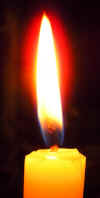 Various thoughts regarding the community
Various thoughts regarding the community
As I wrote under My way to Japan I came to Japan when I was 22 years old young. Today I am 66 years old. That means, I have spent two thirds of my life in Japan.
And among those 43 years I have lived in Hayama for more than 30 years (do not remember the exact number) now. Maybe that is why I call this place “home”, even though it is not my ‘ancestral home’.
My favorite author during puberty, Hermann Hesse, wrote in one of his works “home is not any specific geographic region, but rather the place where your heart feels at home“.
After I came to Japan: I lived (a few weeks) in Tokyo -> next (about 3 years) in Kamakura -> followed by (about 5 years) Taura -> and finally by now for about 33 years in Hayama (where we moved 3 times). I have been living here so long, that even though I am definitely a foreigner, I sometimes consider myself a “local resident”. As such, tourists or people who recently moved to Hayama always strike me as “strangers”.

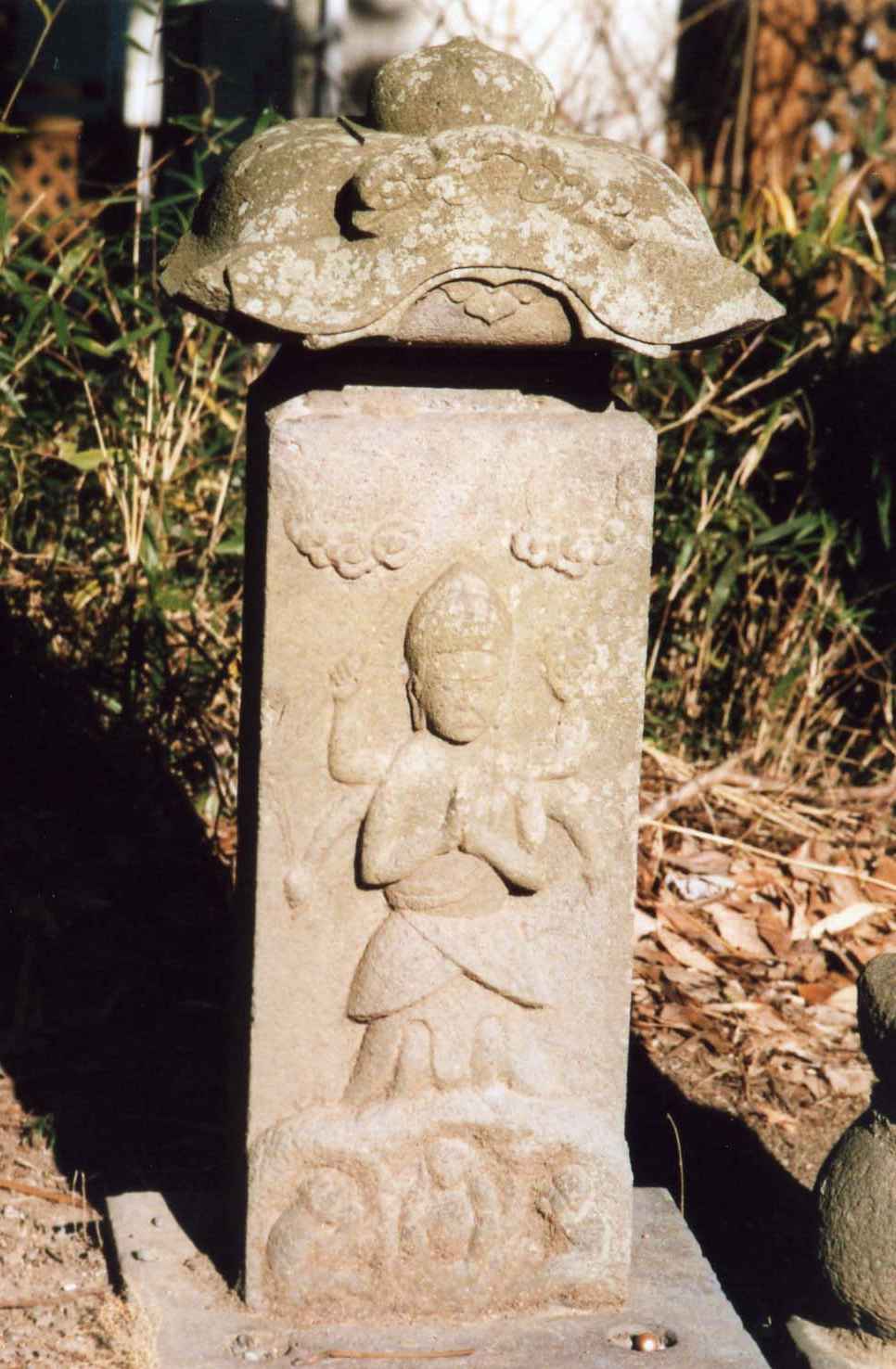 | Little guardian deities quietly – other than the noisy outsiders – watch over the community. I really wish, the Japanese people could regain a little of this QUIET attitude. The trend of the time demands that everything has to be quick and easy. Taking your time seems to give the impression of “loosing” something. These little stone deities are not in a hurry and might be still here in 500 years. Not like the fashionable crazes that drive people mad. Erich Fromm: “Modern man thinks he loses something – time – when he does not do things quickly. Yet he does not know what to do with the time he gains — except kill it.” |
| The sunset, a torii, pine trees, the ocean … all my favorite things are right here. | 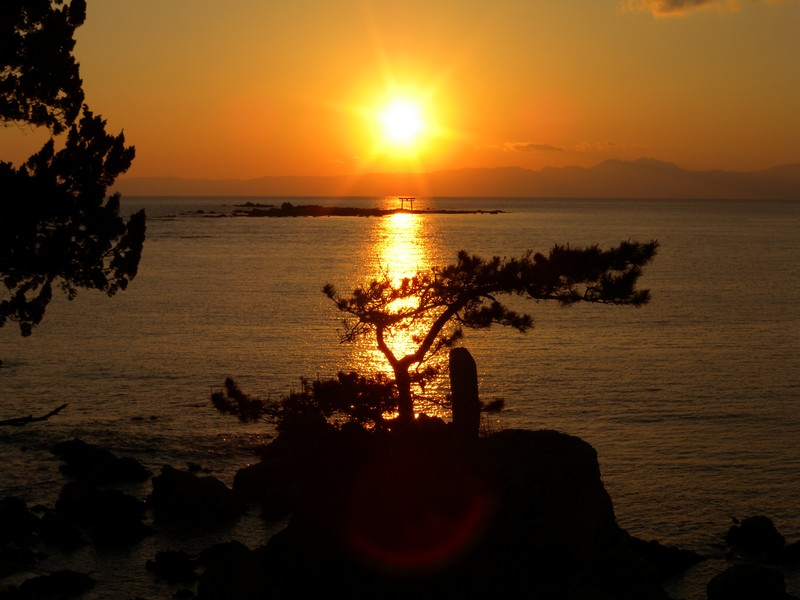 |
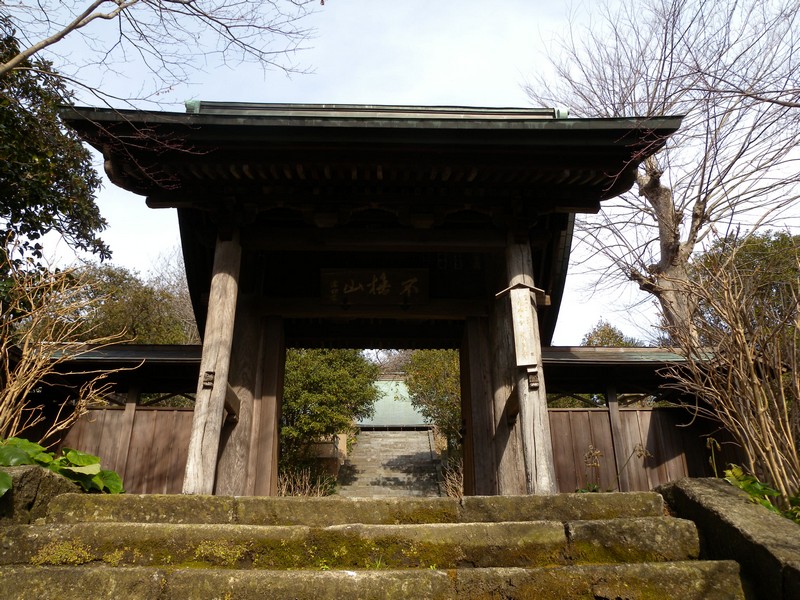 | The entrance to a temple is often called (literal translation) “mountain gate”. This here is a really beautiful example: the gate between this world and the one beyond. Many people like to insist on “locking their doors and windows”. If possible, I would really like to keep my doors (don’t have any gates) open at all times. |
| Immediately before the sun sets, the disappearing sun rays mysteriously illuminate the protective ‘lions’ carved into the entrance pillars. I noticed this particular effect only quite recently and appreciate its quiet emphasis of the guardian. | 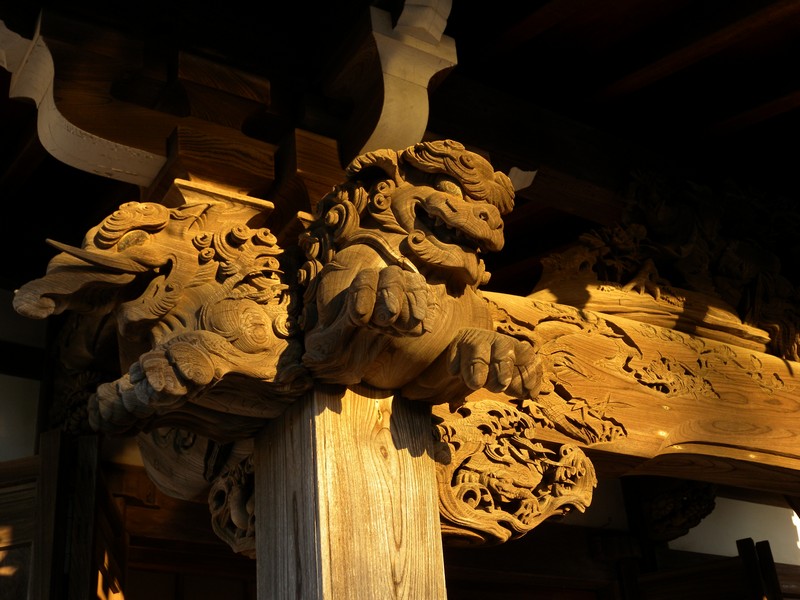 |
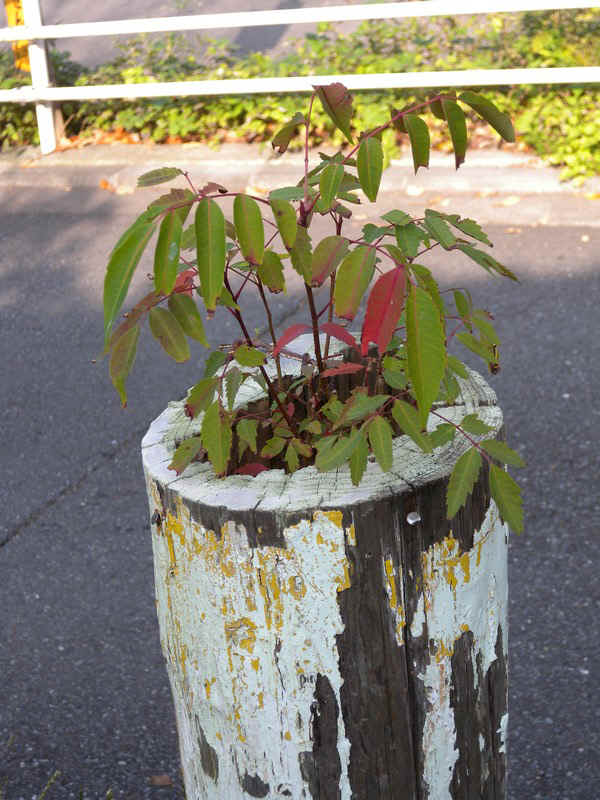 | Near my house, a cut old telephone post. The plant growing inside once died, but came later without hesitation. Life – ANY form of life – is NOT something man can make. I believe all forms of life should be regarded as a miracle. And … man should behave correspondingly when taking the life of other life forms for his own survival. |
| I enjoy this view every morning (weather dependent!) on my way to my clinic. It may not be anything special, but the view always makes me grateful. I was born and raised near the sea and never (for longer periods) away from the ocean. No inland place would ever feel “like home” to me … | 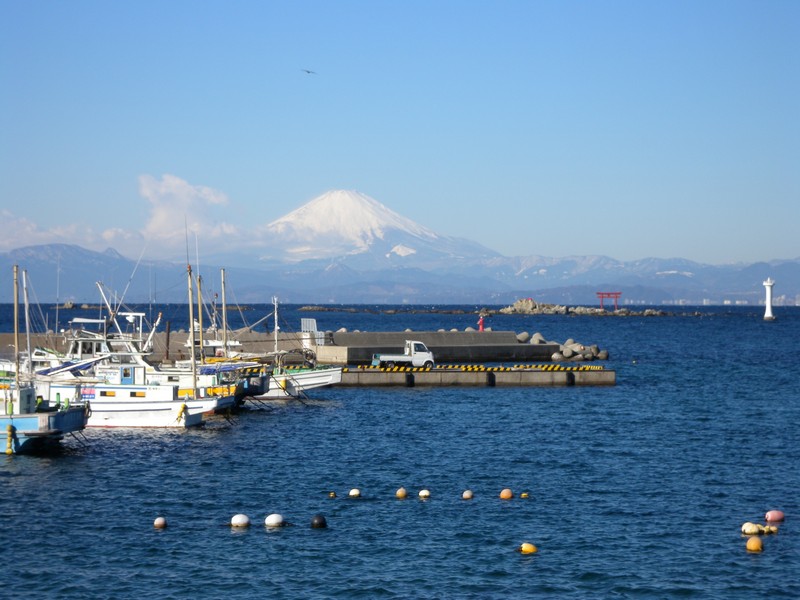 |
 | A view from my house during a rainy day. The fog has almost descended to the ground and obscures signs of civilization. It almost gives the illusion of a tropical rain forest. |
| Next to my clinic runs the “Morito river”, which is crossed 15 m from my clinic by the “Turtle bridge”. I believe it has been so named, because there are turtles in the river. Sometimes you can seen 2-3 of them basking in the sunlight. |   |

Townscape and the community identity
(This is just my personal view)
“Townscape” is a term you often hear in Japan (where it is called “machi nami”. In an age, where many Japanese have forgotten their own traditions (and values!), many people now tend to call it “my town”. A rather unfortunate neologism if you ask me.
You often hear people reminisce with nostalgic enthusiasm about the impression town xxx = the “townscape” had made. Actually, I am using this phrase too when I recall one of the few travels I made to certain places in Japan.
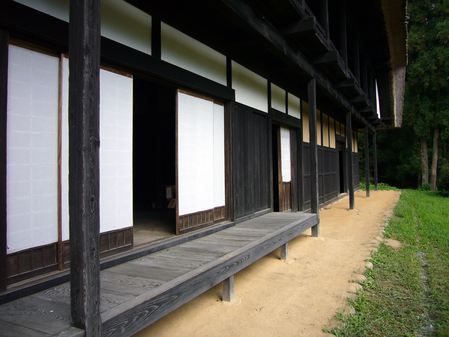
However, I am distinctly under the impression that “modern” towns, cities and villages do no longer impress visitors like that. Nowadays the ‘alignment, average appearance, etc’ has been swallowed by the tidal wave of ‘individualism’, so that a group or line of houses / buildings has no longer a certain style or appearance. When I ride on my bicycle through the narrow side streets in Hayama, I have difficulties identifying the ‘cultural origin (identification)’ of the houses lining the streets. Traditional Japanese houses were characterized by openness and outstanding ventilation. But the more recent houses try to imitate the tightly sealed type of houses preferred in the cold northern countries. By necessity this then requires a total dependency on 24/7 air conditioning. Heaven forbid there is a black out. The construction of this kind of house also leads to the death of maybe one of the world’s best craftsmanships: the Japanese carpentry. Their highly sophisticated woodwork is now being replaced with mass produces plastic or metal parts.
For someone who loves traditional Japanese culture and crafts, this is very disappointing. Since I am not a Japanese and in this sense Japan is maybe not my “home” and here are not my “roots”. Nevertheless watching the progressive loss of integrity and deterioration of those (Japanese) roots makes me very sad.
In English someone who looses for one reason or other his or her “home” is sometimes called “uprooted”. I wonder whether that is a coincidence.

List of hashtags I added. This is a test.
鍼 #針 #鍼灸 #鍼灸院 #東洋医学 #伝統 #職人 #葉山 #逗子 #おきゅう #肩凝り #眼精疲労 全身疲労 #難病 #履歴 #歴史 #自伝 #お話 #ドイツ人 #トーマス #トーマス鍼灸院 #鍼灸師 #英語 #ドイツ語 #用語集 #翻訳 #通訳 #低所得者 #丁寧な説明 #書籍 #acupuncture #moxibustion #clinic #English #German #Hayama #Zushi #StiffShoulders #LowBackPain #SystemicDiseases #LowIncome #alternativetherapy #holistic #interview #personlized #books #translation #interpretation #glossary #oriental #medicine #books #recommend #therapy
![]()
